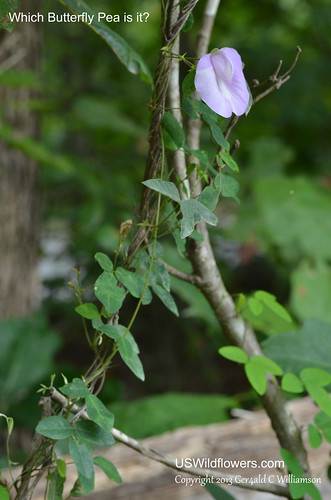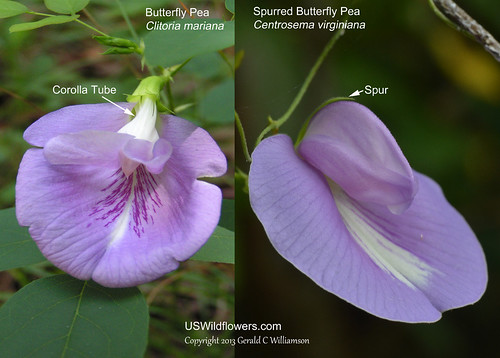Outside of a very few states, Clitoria mariana (Butterfly Pea) and Centrosema virginianum (Spurred Butterfly Pea) are the only species in their respective genera most of in the United States. The Clitoria and Centrosema genera share a characteristic that is rare in Fabaceae – a twist in the pedicel turns the flower “upside down” – the largest petal – the “standard” is below the other petals (keel and wings) rather than above them as is the case with the rest of the family. These two species appear quite similar, so any confusion in the U.S. with identification is usually between these two species. There are a couple of key characteristics that can help.
The first thing that comes to mind is in a difference is one of the common names for each species – Clitoria Mariana is known by some as “Butterfly Pea”, and Centrosema virginianum as “Spurred Butterfly Pea.” The photo below points out the spur that is found at the base of the petals of Centrosema virginianum.
The other key characteristic that can help is the relative length of the corolla tube. As you can see above, Clitoria mariana has a long visible corolla tube – usually as long or longer than the keel and wing petals. Centrosema virginianum, on the other hand, has a short corolla tube that is generally invisible as you look at the frontside of the blossom.
Now it seems so easy!



Can either of these plant be used for their medicinal properties?
Thank you: this was helpful!!